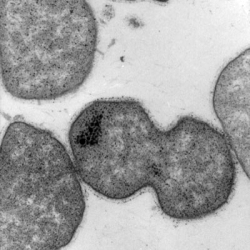Molecular biologists at University of Georgia in Athens have devised a process for engineering a microorganism to generate enzymes at lower temperatures than in its natural state. Their findings appear today in the online journal mBio published by American Society for Microbiology.
The team, led by Georgia professor Michael Adams, engineered a type of microbe called Pyrococcus furiosus that normally grows at a temperature of 100 degrees celsius (212 F). P. furiosus resembles bacteria, but can perform organic functions that bacteria cannot, and as a result are often used in biotechnology and manufacturing.
Not all industrial processes nor all enzymes work at high temperatures, however. Thus Adams and his colleagues sought to produce a microorganism with the functionality of P. furiosus, but can operate at lower temperatures.
The bioengineers needed another a comparable organism with the desired functions to cross with P. furiosus. They found it in an organism, called Caldicellulosiruptor bescii, that prefers to grow at a relatively cool 78 degrees C. The protein product of its gene, known as lactate dehydrogenase, is most stable at that lower temperature.
The Georgia team inserted the lactate dehydrogenase gene in P. furiosus adjacent to a cold shock promoter that activates genes around it when P. furiosus encounters temperatures under 72 degrees C. This genetic placement offers a type of P. furiosus that can turn on lactate production at 72 C. At its normal 100 C, however, lactate production turns off, thus not interfering with its other internal processes.
Adams points out P. furiosus can now make the enzyme that carries out the process at these lower temperatures, but the organism’s other metabolic processes don’t get in the way. “This makes for a cleaner, more controllable reaction,” says Adams.
Read more: Microbes Found to Clean Nuclear Waste, Generate Electricity
* * *


 RSS - Posts
RSS - Posts
You must be logged in to post a comment.